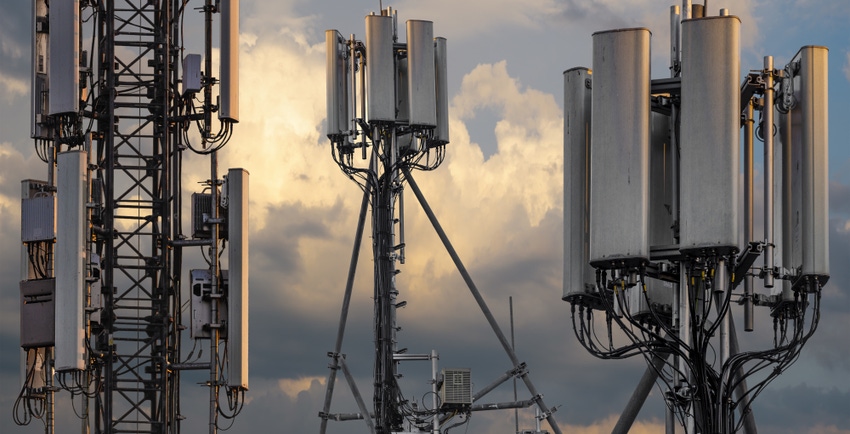5G and the changing face of RAN planning
Network engineers around the world can agree on one thing when it comes to 5G: it brings a great deal of complexity when designing, planning and optimizing networks.
September 13, 2021

Telecoms.com periodically invites expert third parties to share their views on the industry’s most pressing issues. In this piece Gavin Hayhurst, Head of Product Marketing at TEOCO, discusses the challenges operators face when designing new 5G networks and how it is changing how the industry thinks about RAN planning.
Network engineers around the world can agree on one thing when it comes to 5G: it brings a great deal of complexity when designing, planning and optimizing networks. But that’s not all.
Prior to 5G, nobody thought about designing the RAN in order to reduce latency—the focus was instead placed on coverage, capacity, and minimizing interference. But in a 5G world where ultra-low latency applications and services are a driving USP, maximizing network speeds and throughput becomes inherent to the way network engineers design and plan 5G RAN.
In addition to the above, the old issue of meeting growing customer demand for existing and new applications remains: operators are expected to run out of capacity in at least 50% of sites in many parts of the developed world within the next 4-5 years, as traffic density, particularly in dense urban areas is expected to steadily increase, as reported by McKinsey.
Guaranteeing 5G success
With the number of connected devices on the rise and the amount of data traffic across mobile networks increasing, 5G is evolving to support an increased variety of data, devices, and mission-critical applications and processes. 5G delivers more than increased data throughput, it also provides increased capacity and ultra-low latency channels to support complex next-generation applications. The architectural design of the RAN is therefore changing and is critical to 5G’s success.
The 5G evolution means that telcos are faced with significant challenges that legacy architectures are not designed to address. Until now, network planning requirements have generally dealt with issues of signal strength, coverage and mobility support for voice channels, video channels and generic data channels. A dropped call resulting from a weak signal represents nothing more than inconvenience for the caller, but in the era of mission critical applications, for instance autonomous driving or remote surgery, the wider consequences of system failures could be severe. Today we are witnessing a dramatic increase in the value of services, meaning that service interruptions have to be avoided at all costs: more accurate planning, testing and validation need to be the standard. Engineers need to plan for effective service delivery and continuity, and actively guarantee optimal QoS.
Cross departmental collaboration
In a mobile network, the RAN forms the entry point, but end-to-end service delivery requires the access domain to then connect to other domains and applications; transport, core, IMS etc. Now with 5G architecture, some of these domain edges are blurred, with RAN resources that can co-habit with core functions distributed across edge data centers. Inevitably planning for this shared data center usage requires collaboration between engineering teams that traditionally have worked independently or in silos. What’s more, RAN planning engineers face the added challenge of having to rely on tools and applications that have been traditionally operated and owned by network core engineers.
Planning processes and tools will therefore need to enable and support this collaboration providing visibility of edge infrastructure resources. This will see a new “world order” whereby core and RAN network engineers work together to plan and optimize what were once separate and siloed parts of the network. Indeed, with RAN processing resources located in edge data centers, the planning process will now need to consider the fronthaul transmission requirements to reach the edge infrastructure. Once in the edge, there needs to be sufficient spare capacity to operate the required RAN resources, here competing for space with other core network functions and applications that on their part require planning, taking consideration of RAN resource requirements. Striking the perfect balance between the merging of core, RAN and edge environments is significantly changing the role of RAN planning.
The planning and optimization of future 5G networks will be key to ensure the infrastructure meets the coverage, capacity and QoS requirements that 5G demands. Operators should not underestimate the task of network planning in 5G, there are many more dimensions to handle and there are wider competencies overlapping across operational groups, from RAN engineers to core engineers. Failure to understand this evolution of 5G network planning will see telcos unable to deliver on the promise of many 5G services, and ultimately, miss out on significant revenue opportunities. With so much investment placed on 5G, it’s a risk few will be willing to take.
 Gavin Hayhurst is head of product marketing at TEOCO, a software developer that produces analytics, assurance and optimization solutions to over 300 communication service providers – including mobile, fixed, and next generation networks and equipment manufacturers. TEOCO’s suite of software solutions reduces operational costs and improves network quality by delivering real-time, actionable insights into device, network, service and business performance.
Gavin Hayhurst is head of product marketing at TEOCO, a software developer that produces analytics, assurance and optimization solutions to over 300 communication service providers – including mobile, fixed, and next generation networks and equipment manufacturers. TEOCO’s suite of software solutions reduces operational costs and improves network quality by delivering real-time, actionable insights into device, network, service and business performance.
Read more about:
DiscussionAbout the Author(s)
You May Also Like








.png?width=300&auto=webp&quality=80&disable=upscale)


_1.jpg?width=300&auto=webp&quality=80&disable=upscale)


.png?width=800&auto=webp&quality=80&disable=upscale)